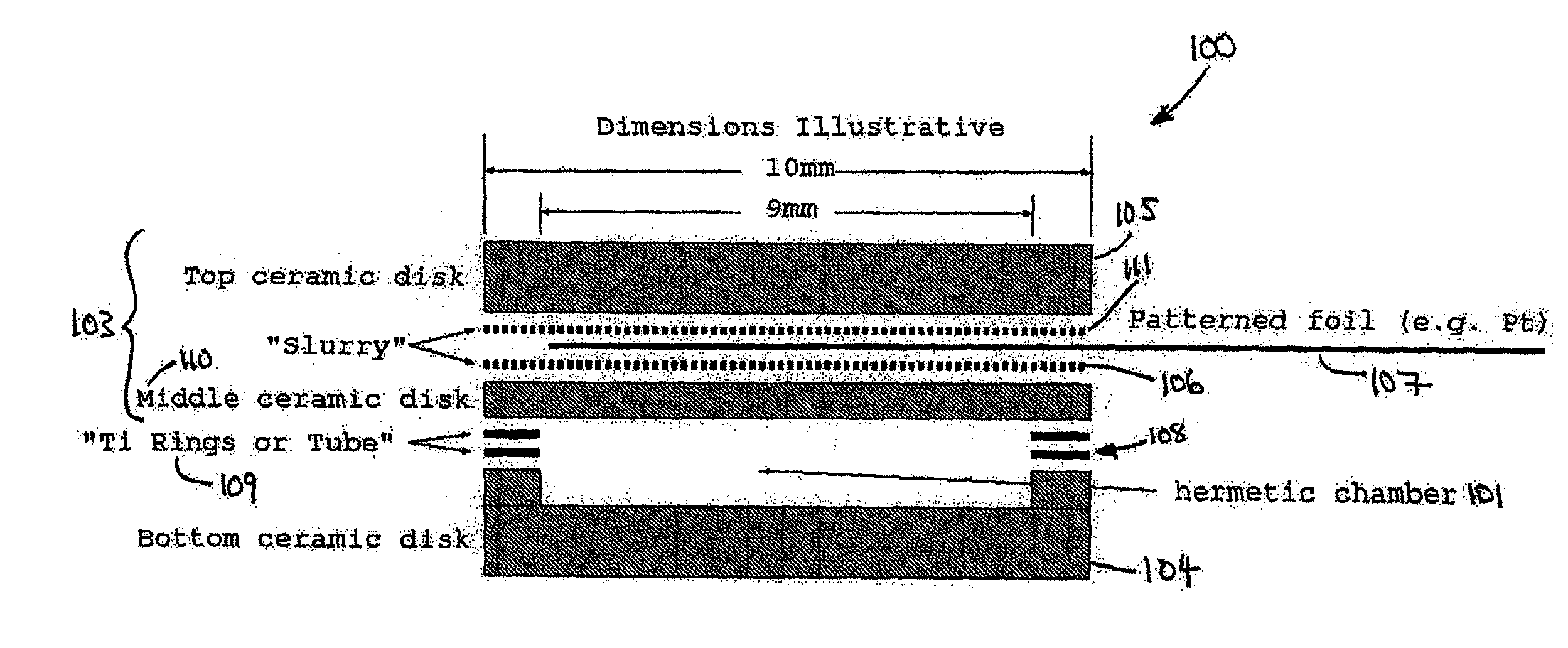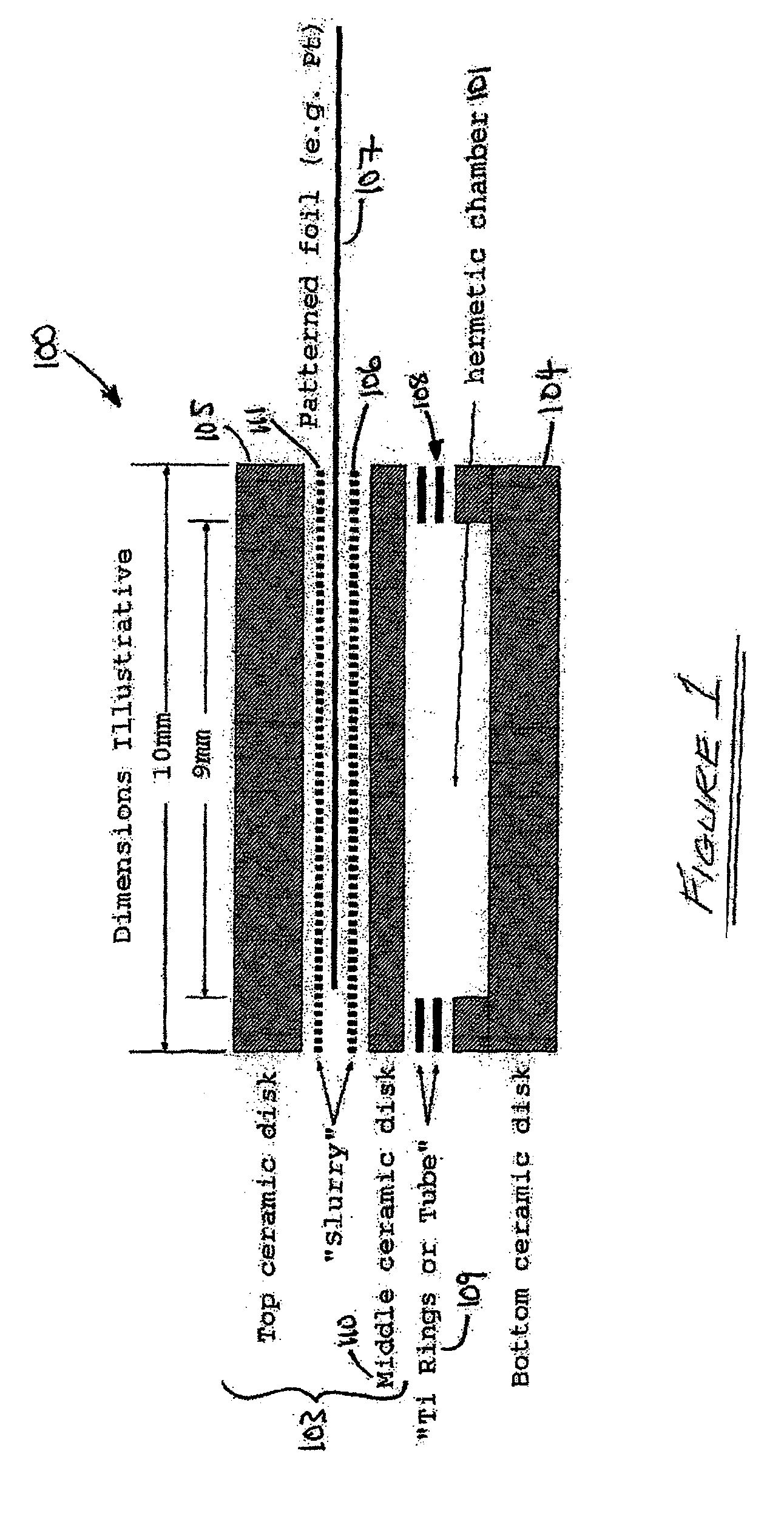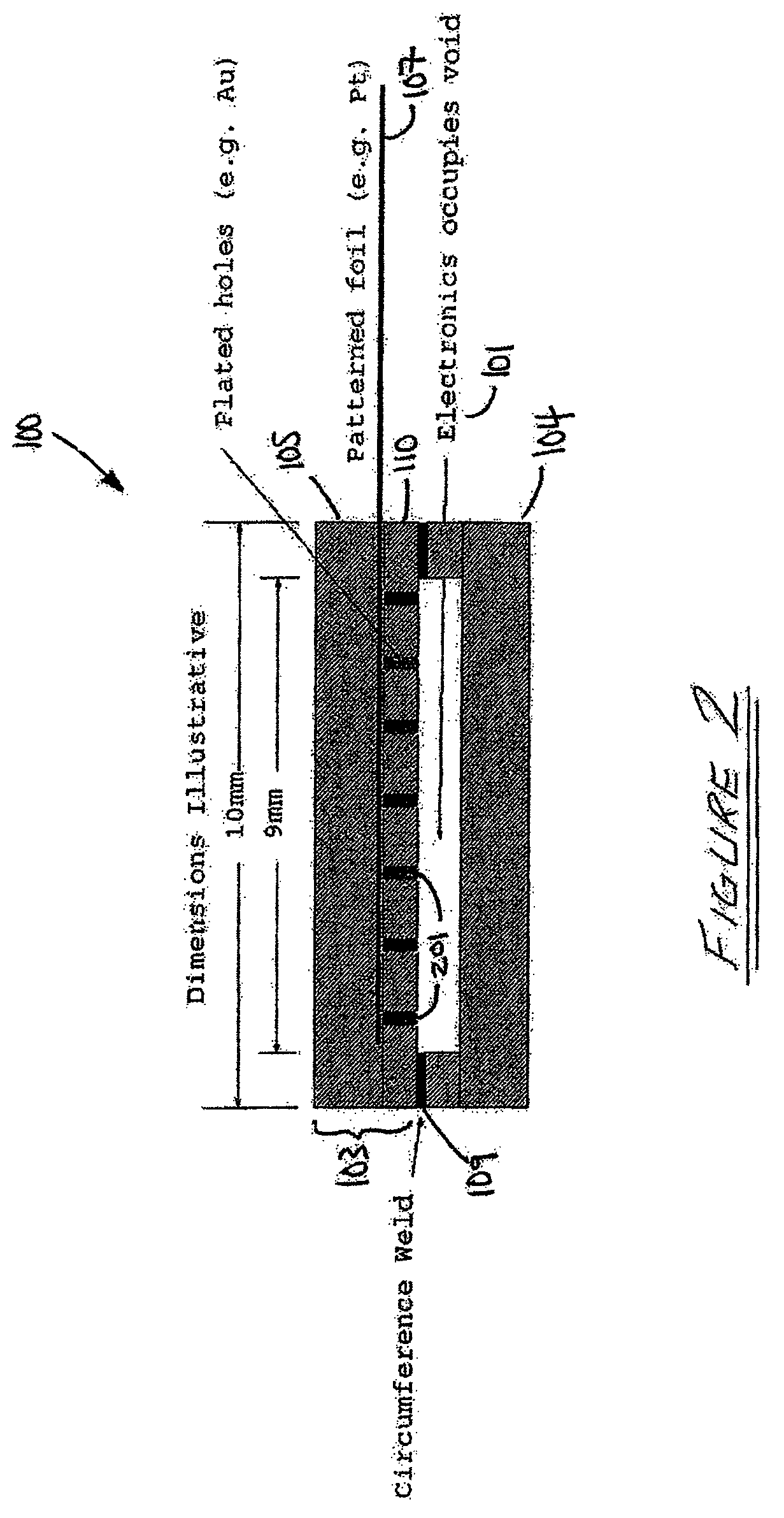Method for fabrication of hermetic electrical conductor feedthroughs
a technology of electrical conductors and feedthroughs, which is applied in the direction of conductive pattern formation, coupling device connections, therapy, etc., can solve the problems of epoxy being toxic to body tissue, affecting the performance of the product, so as to improve the bond strength, facilitate light adhesion, and complicate the fabrication process
- Summary
- Abstract
- Description
- Claims
- Application Information
AI Technical Summary
Benefits of technology
Problems solved by technology
Method used
Image
Examples
Embodiment Construction
[0037]An important factor that determines the longevity of an electronic circuit is its ability to withstand damage from corrosion. Ideally, said corrosion is prevented by sealing the electronics within a chamber that is either held in vacuum, or filled with an inert gas. This chamber is termed hermetic when sealed. However, even with this precaution, diffusion of ions over the lifetime of the electronics can lead to sufficient quantities of corrosive matter such that damage to the electronics can occur. This situation is of critical importance in the manufacturing of implantable medical devices that include electronics cochlear implants, cardiac pacemakers, and other devices containing electronics that are implanted within body.
[0038]The present invention describes a methodology for an improved hermetic chamber that also allows for the transmission of single or a plurality of electrical signals through said hermetic chamber. Said hermetic chamber is comprised of an electrical insul...
PUM
 Login to View More
Login to View More Abstract
Description
Claims
Application Information
 Login to View More
Login to View More - R&D
- Intellectual Property
- Life Sciences
- Materials
- Tech Scout
- Unparalleled Data Quality
- Higher Quality Content
- 60% Fewer Hallucinations
Browse by: Latest US Patents, China's latest patents, Technical Efficacy Thesaurus, Application Domain, Technology Topic, Popular Technical Reports.
© 2025 PatSnap. All rights reserved.Legal|Privacy policy|Modern Slavery Act Transparency Statement|Sitemap|About US| Contact US: help@patsnap.com



